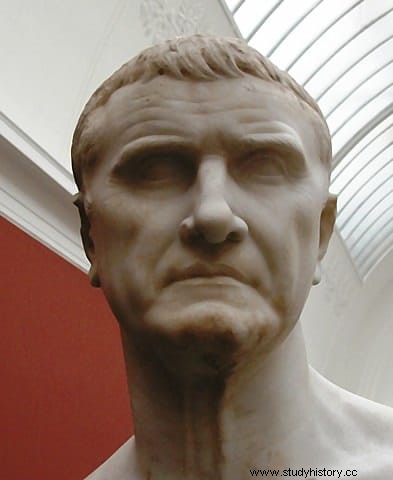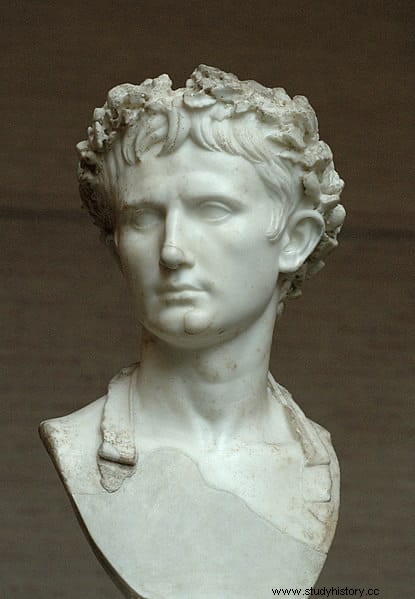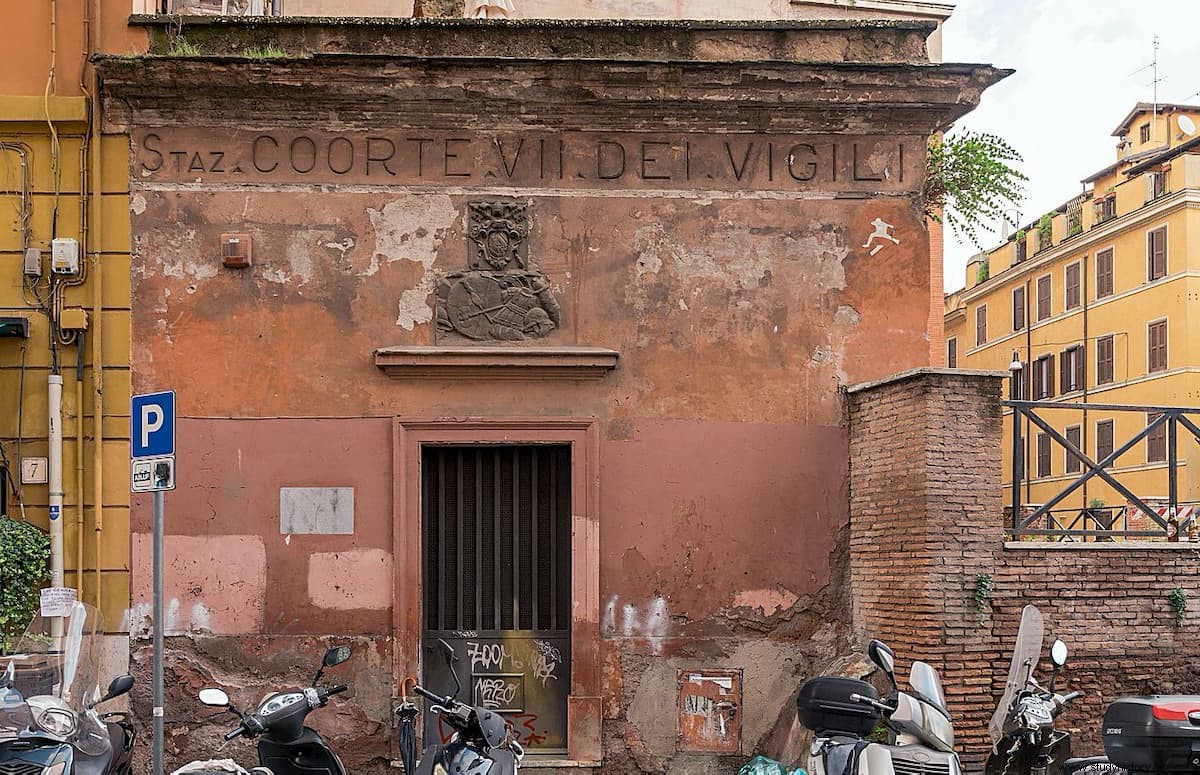Not long ago, in 2004, a team of German archaeologists unearthed a slender, tubular object in the Rhine Valley that they initially identified as a spear but, upon further analysis, concluded was the duct of a water pump. . Dating back more than a millennium and a half, it constituted the material proof of something that the documentary sources on ancient Rome already outlined:the existence of a fire department, which in the 1st century B.C. created an obscure senator named Marcus Egnatius Rufo.
Of course, it is obvious that there must have been precedents, not only among the Romans but also in other civilizations, but it was not a permanent organized service. During the republican era of Rome, firefighting was the mission of the triumviri nocturni (night watchmen), although their equipment limitations made them more concerned with the safety of the neighbors than with putting out the fire. Even though the crowded insulae (multi-storey buildings, made of brick but with wooden beams and, frequently, dangerous taverns with kitchens on the ground floor) were the source of numerous fires, it was very difficult to deal with the problem because the mandate of the aediles, the magistrates who had the competitions, it only lasted one year.
Also, more than one will be remembering at this time that the honor of organizing a proper fire brigade should go rather to Marcus Licinius Crassus, and he would not be without reason. That wealthy aristocrat who achieved fame for having put down the rebellion of Spartacus, who became part of the First Triumvirate with Julius Caesar and Pompey, and who ended up losing his life in an unsuccessful campaign against the Parthians, founded a fire service following a custom that had begun to be imposed in his time:the private brigades sponsored by the wealthiest citizens.

But there is a detail that tilts the balance towards Egnacio Rufo's initiative:Crassus's firemen - some five hundred - acted on his behalf and, given that he was one of the biggest real estate speculators in Rome, they did so only if the owner of the affected building agreed to sell him his ruined property later; of course, at a devalued price. In fact, Plutarch says that Crassus also created a team of arsonists in parallel, in charge of causing fires and thus guaranteeing the work of his firefighters (and, incidentally, as we saw, providing him with a succulent business). In short, it was a private body, while that of Egnacio Rufo was public.
Marco Egnacio Rufo belonged to the equestrian class and was probably a son of Senator Lucius Egnacio Rufo, who is known to have been a moneylender and was friendly with Cicero. The year of his birth is unknown, although it seems that he began his cursus honorum in 22 BC as curule mayor, the magistracy that, subject to that of urban praetor, was in charge of tasks such as organizing the games, monitoring the weights and measures in the markets and resolving commercial disputes. Given such powers, it is understood that he was the one who promoted the firefighters' project.
As we said before, Crassus had already done the same but under his particular and murky conditions, which soon became vox populi . On the other hand, the body created by Egnacio Rufo had a public character, in the sense that it intervened free of charge and above all it did not cost the citizens a sestertius. Why? Well, because the mayor paid for it out of his own pocket:the six hundred firefighters who made up the staff were his slaves. And since the Rome of those times was a chaotic city from an urban point of view, susceptible to burning easily -helped by the torrid summers, and there is the example of Nero-, the fires were quite frequent -in 23 B.C. there was a fairly important one -, so the new company had plenty of opportunities to show off.

That gave great popularity to Egnacio Rufo. So much so that, as Valerio Patérculo reviews, the following year he was already elected praetor without having to wait for the mandatory period between the two magistracies. But the thing did not end there. He was launched, hoping to ride the crest of the wave to continue his meteoric career in the cursus honorum and ascend the political-social scale, that is why in 19 BC, when one of the consuls died leaving the position vacant, Egnacio Rufo presented his candidacy. Too much speed in the eyes of Augustus, who was absent but it is believed that he commissioned Senator Cayo Sencio Saturnino to prevent it.
Sencio was an old follower of Sextus Pompey, the man who had radically opposed the Second Triumvirate formed by Octavio, Marco Antonio and Lepidus, but when their leader lost touch with the triumvirs -and his life-, Sencio had to give up the cause and, in an exercise in realpolitik , he ended up becoming a supporter of Augustus -who received that cognomen in 27 BC-. This one, faced with a subsistence crisis in 22 B.C. and despite resigning the consulship, he assumed dictatorial powers and three years later maintained them, with authority in practice over the new consuls. From his dignity as princeps he had appointed Sencio and Quinto Lucrecio Vespilón to the position, the latter being the deceased.
The former then prepared to obey the order of his superior and block Egnacio Rufo's access, for which he accused him of instigating a conspiracy against Augustus. Whether it was true or not -and Seneca implicated him in more than one plot-, the fact is that the ambitious praetor ended badly:arrested and executed along with some of his followers, (in his place he was appointed suffect consul -interim- to Marcus Vinicio). The same excessive popularity that had elevated him became his sentence, being considered dangerous by Augustus. However, that did not mean eliminating what had originated it and it was giving such good results, so the cunning Augusto created a new fire department.

According to Suetonius, he did it in the image and likeness of Egnacio Rufo, with six hundred slaves. But a few years later, in 6 BC, after quelling another great fire, he replaced them with freedmen (manumitted slaves) and increased their number to three thousand five hundred, dividing them into seven cohorts of fifty men each. Each cohort, led by a tribune, was assigned the security of two of the fourteen Roman districts, equipped with equipment similar to that used by firefighters today:axes, rope ladders, grappling hooks, large hoses and water pumps - reached almost thirty meters - and various other tools.
Its members, who received payment from the state and were entitled to lodging in barracks, received the corresponding training, always remaining an excubitory service retainer. , that is, on duty, in booths ad hoc (one of which is still preserved in Trastevere). Each one specialized in a mission, so there were aquarii bucket relays (water carriers), siphonarii (those who handled the hoses), fireproof centonarii (they wore blankets soaked in vinegar), etc. However, they worked in coordination to, for example, form human chains that carried buckets of water from the wells to the flames (according to Tacitus, Nero ordered that there be a well in each house) or tear down buildings considered insurmountable to make firebreaks.
They were commanded by a praefectus vigilum . This prefecture alluded to the original Militia Vigilum Regime , later renamed Vigilum Cohorts , whose members combined firefighting tasks with public order surveillance; a mixture of firefighters and police. The prefect was not a magistrate but a specifically appointed military man, initially among the equites and later also among the senatorial class, for an indefinite time. He depended on the praefectus urbi , although the appointment and removal of him were the direct prerogative of the emperor. Over time, he increased its importance, diversifying and expanding its scope of action to the judicial, especially since the mandate of Tiberius.

The popularity of the body was growing and if the vigilii they also began to be used as an auxiliary military corps, in the time of Septimius Severus they were exempted from paying taxes. Because I watch them It is they had come to stay, given their obvious need and their good results. In fact, Claudius created another seven-hundred-man firefighting service in Ostia in AD 50. and little by little all the towns were incorporating theirs, sometimes by public initiative and others by the neighbors or the collegiati (craft guilds). Finally, it is worth noting the curiosity that women could be part of them and in some places there were quite a few, such as in Carinthia, where they made up ten percent of the workforce.
